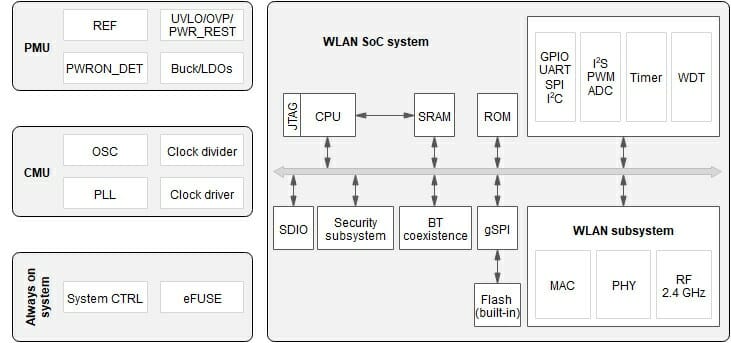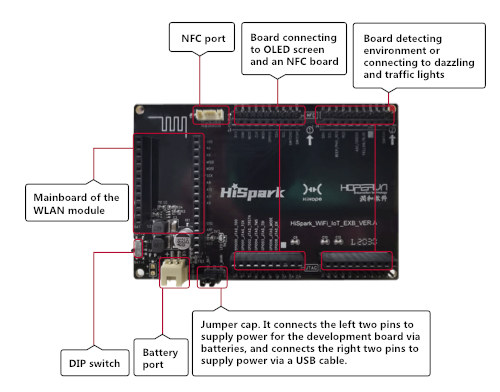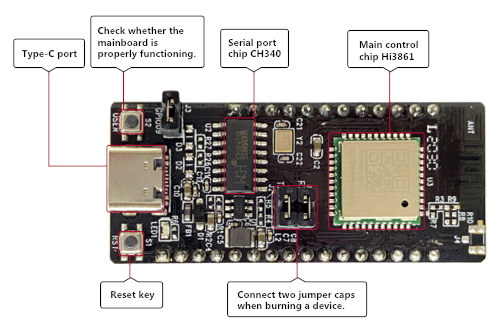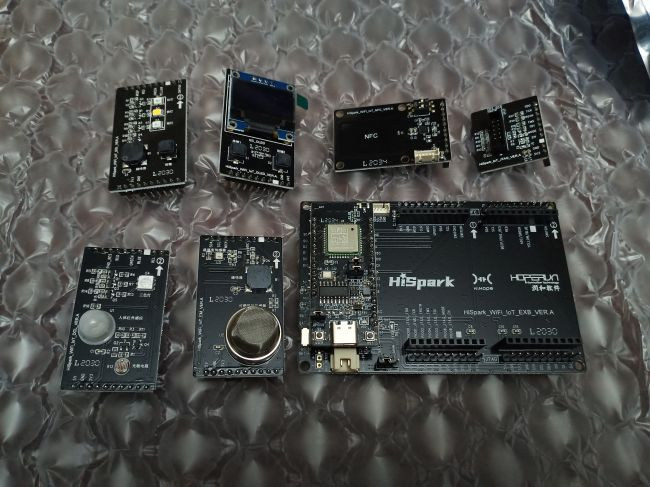HiHope HiSpark WiFi IoT development board features Hisilicon Hi3861 microcontroller with 2.4 GHz 802.11b/g/n WiFi 4 and supports Huawei LiteOS as well as HarmonyOS.
Equipped with 2MB flash and 384KB SRAM, the board targets smart home applications, and ships with a baseboard to help with development.
- MCU – Hisilicon Hi3861 32-bit microcontroller @ up to 160 MHz with 352 KB SRAM and 288 KB ROM, 2 MB flash memory, and WiFI 4 connectivity; QFN-32 5x5mm package
- WiFi
- 802.11b/g/n standard up to 72 Mbps @ HT20
- 2.4 GHz frequency band (ch1-ch14).
- Station (STA) and access point (AP) modes with up to 6 clients for the latter
- WiFi mesh with up to 256 nodes
- Security – WPA, WPA2 personal, and WPS 2.0
- PCB antenna
- USB – 1x USB Type-C port for power and programming via CH340 chip
- Expansion – 2x headers with up to 2x SPI, 2x I2C, 3x UART interfaces, 15x GPIO, 7x ADC inputs, 6x PWM interfaces, 1x I2S
- Misc – Reset and user buttons, jumper to select boot mode
- Power consumption for Hi3861 chip
- Ultra deep sleep mode: 5 μA @ 3.3 V
- DTIM1: 1.5 mA @ 3.3 V
- DTIM3: 0.8 mA @ 3.3 V
- Dimensions – 5×2 cm
- Temperature Range – –40°C to +85°C

HiSpark board appears to be an official development platform for Huawei OpenHarmonyOS since there’s a dedicated device page on HarmonyOS website.
The specifications do not mention the type of microcontroller core used in Hi3861, but the software development workflow shows a Windows workstation to edit the code and Linux server which relies on a GCC RISCV-32 toolchain to build the code. So it must be a 32-bit RISC-V core despite some other websites mentioning a Cortex-M4 core. If you don’t plan on modifying the firmware, you can also program the board with Python.

Besides the device page on the HarmonyOS website, you’ll find code samples on Gitee, and a subforum on Elefans where developers share their experience (Chinese language only).
I could also find an unboxing box on Elefans, where somebody purchased a complete kit with HiSpark board, the baseboard and various modules include an OLED display, NFC, PIR, etc…
HiSpark board is sold for 56 RMB ($8.4) on HiHope Taobao store, while the devkit goes for 399 RMB ($59.5). There are also two other HiSpark devkits for HarmonyOS including HiSpark AI camera (Hi3516) and HiSpark DIY IP camera (Hi3518).

Jean-Luc started CNX Software in 2010 as a part-time endeavor, before quitting his job as a software engineering manager, and starting to write daily news, and reviews full time later in 2011.
Support CNX Software! Donate via cryptocurrencies, become a Patron on Patreon, or purchase goods on Amazon or Aliexpress






